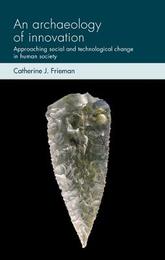
|
An Archaeology of Innovation: Approaching Social and Technological Change in Human Society
Hardback
Main Details
Description
An Archaeology of Innovation is the first monograph-length investigation of innovation and the innovation process from an archaeological perspective. It interrogates the idea of innovation that permeates our popular media and our political and scientific discourse, setting this against the long-term perspective that only archaeology can offer. Case studies span the entire breadth of human history, from our earliest hominin ancestors to the contemporary world. The book argues that the present narrow focus on pushing the adoption of technical innovations ignores the complex interplay of social, technological and environmental systems that underlies truly innovative societies; the inherent connections between new technologies, technologists and social structure that give them meaning and make them valuable; and the significance and value of conservative social practices that lead to the frequent rejection of innovations.
Author Biography
Catherine J. Frieman is Associate Professor of European Archaeology at the School of Archaeology and Anthropology, Australian National University -- .
Reviews'Whether you are a social archaeologist or not, this book is a must-read for anyone studying innovations and change, but especially anyone interested in human complexity and how we were, and always will be, connected in a flux.' Ana Catarina Basilio, European Journal of Archaeology 'This is a book that deserves to be widely read, and the ideas inside discussed and debated not only in archaeology but across fields [...] It is an invaluable contribution.' James L. Flexner, Archaeology in Oceania 'Frieman has produced an extremely valuable piece of work for which praise is due [...] The discussion firmly situates innovation as something worth considering in its own right, and not simply as the means to the end of technological change. Instead, innovation is conceptualised as a social process within which material, human, structural and historical actors dynamically and uniquely interact in myriad ways.' Adam Sutton, Archaologische Informationen -- .
|